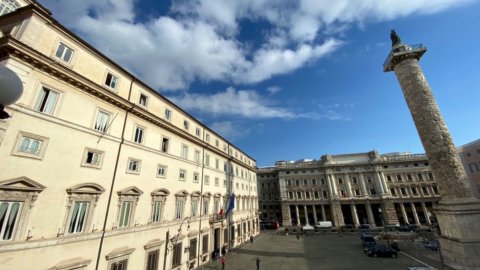Le Emerging Stock Exchanges in January they lost even more than 10 percent and seemed destined for a tough bear market of uncertain duration. Blame the tapering, accused the governor of the Bank of India, none other than Raguram Rajanm, former general manager of the International Monetary Fund, who had no qualms about bringing the Federal Reserve's selfishness to trial.
On the contrary, we can note with some relief that the Bovespa, or the Brazilian Stock Exchange, in euros, has risen by around 4 percent since the beginning of the year, while the S&P 500 fluctuates around the values at the beginning of the year. Thanks to the rise in interest rates, which rose to 11 per cent at the beginning of April, with the relative strong appreciation of the real which rose by 7,3%.
Another interesting case is the Turkey. The country, considered to be at high risk on the eve of the elections, has not plunged into chaos (as feared by many) and Istanbul gains 7 percent in euros. Indeed, without anything substantial having changed in the institutional clash that is tearing the country apart, the Finance Ministry is quietly preparing the launch of a thirty-year dollar bond, a type of operation that is usually carried out in moments of maximum calm and solidity. Meanwhile, the government has launched a 4,375-year 10 percent in euro placed through Deutsche Bank, Ing and JP Morgan. The Turkish lira, meanwhile, has recovered a good XNUMX percent from its January lows.
The two cases examined are not isolated. What about theArgentina, date for a goner in mid-January and up again today? Dollar bonds recovered 8 percent from their lows and the peso even strengthened against the dollar. As for the China, whose collapse seemed to have begun, no one talks about the unsafe bonds (which still exist) while the growth rate, which was given as close to collapse, is still equal to 7,4 percent.
The markets, with the exception of the Russian Micex overwhelmed by the Ukrainian crisis, have denied the forecasts of the beginning of the year. And so whoever acted with a contrarian spirit got a good deal. From the lows reached on 5 February last, the MSCI Emerging Markets index recorded a rise of 9,6% in dollars. The average yield on BNDs slipped from 5,51% at the start of the year to 5,14%. The best deals were made on bonds in local currency, thanks to the recovery of currencies after the shock at the start of the year: the Indonesian rupee gained 7,8%, even the Indian rupee regained its share, in the midst of the electoral tussle.
Why this rally? First, the Fed managed to master T-bond rates by curbing the feared rise in yields. Meanwhile, emerging markets have demonstrated a very different resilience to other crises. According to Markit calculations, the average dividend paid by shares included in the Emerging Markets index this year is equal to 2.% of the stock market value, half a point more than the 1,98% of the Standard & Poor's 500. in line with the average 2,33% of the Milan Ftse/Mib basket.
That is, unlike in the past, emerging markets demonstrate stronger and more stable fundamentals, with the guarantee of a strong commitment to support Currencies of reference. The pay-out ratio average of BRIC companies (Brazil, Russia, India and China) has been steadily growing for the past three years.
The rebound of the Emerging had as its main effect, however, the return in force of speculation, with new episodes of euphoria that scare insiders. During the week, the first international bond issue by India Oil (one billion dollars) recorded bookings for 9 billion. Pakistan issued five-year seven-year bonds (two billion) at a rate of 7 to 8 percent with four times as much demand.
Numbers that frighten the Monetary Fund that it has taken over the boom in corporate issues in the Emerging Countries: more than 300 billion dollars from 2008 to today, with the result that the debit card of Chinese, Malaysian and Hungarian companies has exceeded the threshold of 100 percent of GDP.
In short, reasons to be cautious they are stronger than ever. Also for the numerous electoral and political appointments ahead, from the Indian elections to the duel in Brazil. But the real lesson of 2014 is that, in a climate of almost zero inflation, with modest and declining growth rates, market trends tend to be weak and changeable. In a world that grows slowly, the real skill of central bankers and managers consists in rotating assets, like so many conjurers who are able to make one forget the amount of impending debts.
Under therefore with purchases in Africa o Australia to exploit the rebound in commodities (it is no coincidence that China wrote a check for 6 billion dollars to Glencore for the Las Bambas copper mine in Peru) or, even more fascinating, to participate in the gains of funds and ETFs specialized in water, an increasingly scarce. But be careful not to stay with the match in your hand.




